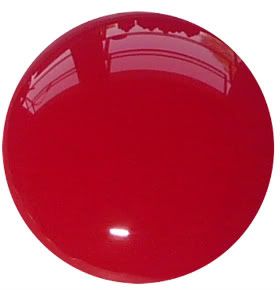Tattoo Advice and History > Tattoo Advice > Reactions To Red Tattoo Ink
Reactions to Red Tattoo Ink
Q) Hello Jinxi, I'm excited about this new section of your site, especially since you are exactly the person I thought of when I ran into this tattoo "issue." I have a fairly new tattoo with font and a garnet heart and I've noticed that the colored portion isn't healed as well as the black. It sort of has the texture of soft leather (ewww). It doesn't itch or hurt, it just feels strange to the touch. So my question is, do you have any useful information or experience with red reactions? And should I see my artist about this? - Gracie
A) Congratulations on your new tattoo, Gracie. Yay for new ink (always exciting in my book). First and foremost, YES, definitely see your artist as soon as you can. Though there are theories about the difficulties associated with red ink, when it comes to ANY problem with any tattoo, nothing trumps the importance of conferring with your artist before anything else. Nobody understands the design, area, length of time, work involved, or circumstances better than the person that lent their ink slinging skills. They might know instantly what it will take to help your situation, simply by knowing the details and background of the tattoo piece. So first, definitely head into her/his shop.
With that said, unfortunately red ink gets a bad rap and that might not be completely unjustified. Both Steve and I have each had one difficult dealing with red tattoos, however, we have also had great experiences with them as well. Many factors may come into play here. One reason for the reactions many red tattoo inks might bestow is that some reds contain components that have a higher likelihood of an allergic reaction. Oftentimes, people who are sensitive to certain metals (lesser quality jewelry, etc.) in general might be more likely to have a reaction.
 Interestingly, tattoo "inks" aren't actually inks at all, but rather pigment compositions which are suspended in the base solution. According to chemist, Anne Marie Helmenstine, Ph.D., "Today's pigments primarily are metal salts. However, some pigments are plastics and there are probably some vegetable dyes too. The pigment provides the color of the tattoo. The purpose of the carrier is to disinfect the pigment suspension, keep it evenly mixed, and provide for ease of application."
Interestingly, tattoo "inks" aren't actually inks at all, but rather pigment compositions which are suspended in the base solution. According to chemist, Anne Marie Helmenstine, Ph.D., "Today's pigments primarily are metal salts. However, some pigments are plastics and there are probably some vegetable dyes too. The pigment provides the color of the tattoo. The purpose of the carrier is to disinfect the pigment suspension, keep it evenly mixed, and provide for ease of application."
Helmenstine also notes that, "Some reds contain iron, some contain toxic metals such as cadmium or mercury. There is an organic red that causes fewer reactions than the metal-based reds. Red ink is well-known for causing sensitivity reactions."
Each brand will differ in their ingredients, so be sure to consult with your artist if you are prone to allergic reactions and have sensitive skin. Of course, it's always better to prevent a problem than try to fix it, so ask beforehand if she/he has had any previous clients react strangely to a red area. This does not indicate any problem with her/his skills, but may indicate that one of the inks used contains components that are more concentrated with any of these aforementioned elements that may effect those more susceptible to a reaction. Even if they have had clients with a "red reaction" in the past, that does not necessarily mean that you will. In fact, of all the red tattooed areas I have on my skin, only ONE has ever presented a problem.
As with all aspects of the tattoo experience, no two collectors, nor artists, are the same. If you are concerned beforehand, note that taking precautions are always worth it; meaning, talk to your artist about issues you are worried about and take into account personal knowledge of your own body, skin, allergic and medical history. If you are having aftereffect issues with red pigment tattoos, be sure to keep the tattoo as clean as possible, avoid direct sunlight while it is healing, and follow your artist's aftercare directions. If necessary, never hesitate to consult a doctor if one is called for. Your skin is your largest organ and a precious one at that. So take good care of it, especially if you add beautiful body art to that canvas.
Last updated on January 16, 2012 by Jinxi Boo




